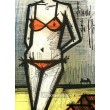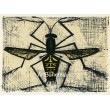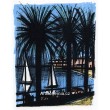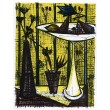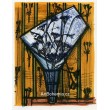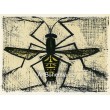Košík
0
x
Produkty
(prázdný)
Žádné díla
Bude determinováno
Dopravné a balné
0 Kč
Celkem
Produkt byl úspěšně přidán do nákupního košíku
Počet
Celkem
0 ks zboží.
1 dílo v košíku.
Za díla:
Doručení a balné:
Bude determinováno
Celkem
Kategorie
- grafiky/tisky
- obrazy
- kresby
- plakáty
- fotografie
- exlibris
- bibliofilie
- knihy/katalogy
- starožitnosti
- sochy/plastiky
- sklo
-
Hnutí
- abstrakce
- art-deco
- čs.avantgarda/moderna
- expresionismus
- fauvismus
- impresionismus
- kubismus
- naivní umění
- op-art
- poetismus
- pop-art
- realismus
- secese
- sociální kritika
- soudobá tvorba
- surrealismus
- světová avantgarda/moderna
- Škola prof. Albína Brunovského
- Škola prof. Zdeňka Sklenáře
- Škola prof.Julia Mařáka - mařákovci
- Žánr
- Zprávy/NEWS
- Doporučujeme
Nová díla
-

-

Dobrou chuť
4 840 Kč -

W.A.Mozart - Don Giovanni
3 872 Kč
-

Bacchanale, opus 927 (17.11.1959)
13 068 Kč -40% 21 780 Kč
Hnutí
- abstrakce
- art-deco
- čs.avantgarda/moderna
- expresionismus
- fauvismus
- impresionismus
- kubismus
- naivní umění
- op-art
- poetismus
- pop-art
- realismus
- secese
- sociální kritika
- soudobá tvorba
- surrealismus
- světová avantgarda/moderna
- Škola prof. Albína Brunovského
- Škola prof. Zdeňka Sklenáře
- Škola prof.Julia Mařáka - mařákovci
Žánr
NEJŽÁDANĚJŠÍ UMĚLCI
- Anderle Jiří
- Augustovič Peter
- Benca Igor
- Beneš Karel
- Bím Tomáš
- Born Adolf
- Brun Robert
- Brunovský Albín
- Boštík Václav
- Bouda Cyril
- Bouda Jiří
- Braque Georges
- Brázda Jiří
- Buffet Bernard
- Cézanne Paul
- Čapek Josef
- Čápová Hana
- Dalí Salvador
- Demel Karel
- Dudek Josef
- Dufy Raoul
- Effel Jean
- Felix Karol
- Filla Emil
- Giacometti Alberto
- Grosz George
- Chagall Marc
- Istler Josef
- Janeček Ota
- Jiřincová Ludmila
- Kandinsky Wassily
- Kĺúčik Peter
- Komárek Vladimír
- Kulhánek Oldřich
- Kupka František
- Lada Josef
- Lhoták Kamil
- Matisse Henri
- Miró Joan
- Mucha Alfons
- Muzika František
- Picasso Pablo
- Pileček Jindřich
- Reynek Bohuslav
- Sukdolák Pavel
- Suchánek Vladimír
- Svolinský Karel
- Šíma Josef
- Špála Václav
- Švabinský Max
- Švengsbír Jiří
- Tichý František
- Toulouse-Lautrec Henri de
- Toyen
- Trnka Jiří
- Váchal Josef
- Vik Karel
- Warhol Andy
- Zábranský Vlastimil
- Zoubek Olbram
- Zrzavý Jan
Seznam děl umělce Buffet Bernard
Bernard Buffet was born July 10, 1928 in Paris, died on October 4, 1999 in Tourtour (Var - France).
In December 1943, he entered the « Ecole Nationale Superieure des Beaux-Arts » where he studied for two years. After this he worked alone.
In 1946, he
Bernard Buffet was born July 10, 1928 in Paris, died on October 4, 1999 in Tourtour (Var - France).
In December 1943, he entered the « Ecole Nationale Superieure des Beaux-Arts » where he studied for two years. After this he worked alone.
In 1946, he had his first painting shown, a self-portrait, at the Salon des Moins de Trente Ans at the Galerie Beaux-Arts.
In 1947, he exhibited « L'homme accoude » at the Salon des Independants and in December of the same year he had his first solo exhibition , at the Art Impressions book shop in Paris, organised by Guy Weelen and Michel Brient. Raymond Cogniat bought, for the Paris National Museum of Modem Art, a painting entitled « Nature morte au poulet ».
In April 1948, the painting « Le Buveur » was exhibited at the « Jeune Peinture exhibition » organised at the Galerie Drouant-David. His painting was bought by Doctor Girardin, who, at his death, left it to the Paris Museum of Modern Art.
At this time Emmanuel David asked him to sign an exclusive contract with his gallery. This contract was then, to be shared by Maurice Garnier.
In June of the same year, he was awarded the Critic's Prize at the Galerie Saint-Placide in Paris, in conjunction with Lorjou. In July there was an exhibition of his works at this same gallery. In November he exhibited: « La ravaudeuse de filet » in the Salon d'Automne. This painting was also bought by Doctor Girardin and was also left to the Paris Museum of Modern Art upon Doctor Girardin's death.
In 1949, Pierre Descargues published Bernard Buffet at the « Presses Litteraires de France ».
ln 1951, his friend Jean Giono let him a small house in Manosque where he lived for a short while before renting an ancient « bergerie » in Nanse, near Reillanne, 17 kilometres from Manosque. He worked there until 1954.
In 1953, Louis Aragon wrote, in les Lettres Francaises, an article entitled Le Paysage Francais a quatre siecles et Bernard Buffet 24 ans (Four Centuries of French Landscape Painting and the 24 Years Old Bernard Buffet).
In 1955, he was awarded the first prize by the magazine Connaissance des arts, which named the 10 best post-war artists. He met Georges Simenon who became his close friend. He bought property in Domont, near Paris, that he left the following year to live at the « Chateau l'Arc » near Aix-en-Provence, which was to be his main residence until 1964.
In 1958, at the age of 30, the first retrospective of his work was held at Galerie Charpentier.
The same year Pierre Berge published Bernard Buffet at Editions Pierre Cailler, and Georges Hourdin published l'Enfer et le Ciel de Bernard Buffet at Cerf.
December 12,1958 Bernard Buffet married Annabel Schwob at Ramatuelle.
In 1961 he painted a series of paintings depicting the life of Jesus Christ, intended to decorate the Chapelle de Chateau l'Arc. Ten years later, at the request of Monseigneur Pasquale Macci (secretary to Pope Paul VI) he offered these paintings to the Vatican Museum where they remain on permanent exhibition.
His daughter Virginie was born in 1962, and his daughter Danielle in 1963.
In 1964 Maurice Druon published Bernard Buffet at Editions Hachette. Bernard Buffet bought « la Vallee » in Saint-Cast in Britanny where he worked until 1970.
From 1965 to 1971 he lived both in Britanny and Paris.
In May, 1971 he was named « Chevalier de la Legion d'Honneur ». In May ,1971 his son Nicolas was born.
November 23, 1973 the Bernard Buffet Museum was inaugurated ; it was founded by Kiichiro Okano, in Surugadaira, Japan.
March 13, 1974 he was elected to the Académie des Beaux-Arts
Bernard BUFFET à l'Académie des Beaux Arts
In 1978, at the request of the Postal Administration, he designed a stamp depicting l'Institut et le Pont des Arts.
In 1980 he got a Manor in Normandy, which he left in 1986 to live at the Domaine de la Baume, near Tourtour in the Haut-Var.
In 1986, Annabel published D'amour et d'eau fraiche at Sylvie Messinger, and Georges Durand, la Divine Comedie de Bernard Buffet at Desclee de Brouwer.
In 1986, « Bernard Buffet » by Yann le Pichon edited by Maurice Garnier, obtained the Elie Faure Award.
December 9, 1988 a large extension to the Bernard Buffet Museum was inaugurated in Japan.
In 1989, Alin Alexis Avila published « Bernard Buffet », edited by Nouvelles Editions Francaises aux Editions Casterman.
___________________________________________
Beginning in 1949 yearly exhibitions were held in February at the Galerie Drouant-David, and as of 1957 at the Galerie David and Garnier, and finally at Galerie Maurice Garnier.
The themes for these exhibitions were
1952 - The Passion of Christ
1953 - Landscapes
1954 - Interiors
1955 - Horror of the war
1956 - The Circus
1957 - Paris Landscapes
1958 - Joan of Arc
1959 - New-York Landscapes
1960 - The Birds
1961 - Portraits of Annabel
1962 - The Chapelle de Chateau l'Arc
1963 - Venice Landscapes
1964 - The Bemard Buffet Museum
1965 - The Ecorches
1966 - Nudes
1967 - The Corrida
1968 - The Beaches
1969 - Churches of France
1970 - Castles of the Loire Valley
1971 - Fools
1972 - Daniele and Virginie
1973 - The Boats
1974 - Landscapes
1975 - Landscapes
1976 - Winter Landscapes
1977 - « Dante's Infemo. »
1978 - The French Revolution 1979 - The Flowers
1980 - Nudes
1981 - Japan
1982 - Self Portraits
1983 - Landscapes
1984 - Small Paintings
1985 - The Automobile
1986 - The Low Countries
1987 - Venice Landscapes
1988 - Sumo and Kabuki
1988 - Natures mortes
1989 - Don Quichotte
1990 - 20.000 Leagues Under the Sea
1990 - Britanny
1991 - Sees of New York
1991 - Remembers of Italy
1992 - Les clowns musiciens
1992 - Saint-Petersbourg
1993 - L'Empire or the pleasurs of the war
1993 - Promenade Provencale
1994 - L'Odyssee
1995 - Les sept peches capitaux
1996 - Pekin
1997 - Regates
1998 - The house
1999 - Mes singes
2000 - The death
Bernard Buffet has had many solo exhibitions world-wide, including New York, Chicago, Palm Beach, Montréal, Vancouver, Tokyo, Osaka, Johannesburg, Londres, Amsterdam, Bruxelles, Berlin, Varsovie, Bâle, Zurich, Genève, Rome, Venise, Milan, Madrid.
The major retrospective exhibitions of his work include :
In 1958 : Galerie Charpentier, Paris
In 1959 : The French Institute, in Berlin
In 1959 : At Knokke le Zoute, in Belgium
In 1963 : The Museum of Modem Art, in Tokyo
In 1969 : Unterlinden Museum in Colmar
In 1977 : At the Gemeentmuseum, Wieger Deurne, Holland
In 1978 : The Postal Museum, Paris
In 1983 : Seedamm Cultural Center, Zurich
In 1985 : Refectoire des Jacobins, Toulouse
In 1987 : The Odakyu Museum, Tokyo
In 1991 : Pouchkine Museum, Moscou
In 1991 : Ermitage Museum, Saint-Petersbourg
In 1991 : Hyundai Museum, Seoul
In 1993 : Gustave Courbet Museum, Ornans
In 1994 : Documenta Halle, Kassel In 1995 : The Odakyu Museum, Tokyo
In 1996 : Beaux-arts Museum, Kaoshiung
Buffet has created the decor for the following :
Concours des Jeunes Compagnies, in 1948
La Chambre, by Georges Simenon, for the Ballets de Roland Petit in 1955
Le Rendez-vous manque, by Francoise Sagan in 1958
Patron, by Marcel Ayme in 1959
Carmen by Bizet for l'Opera de Marseille in 1962
Le Grand Cirque, by Katchaturian, for Serge Lifar. Opera de Paris Ischtar by Vincent d'lndy, for Serge Lifar
La Valse, de Maurice Ravel pour l'Opera-Comique, 1970
In: http://www.museebernardbuffet.com/enbiographie.html
*****
(b Paris, 10 July 1928). French painter, illustrator and printmaker. After studying at the Ecole des Jésuites, he entered the Lycée Carnot in Paris in 1939. His antipathy to academic study led to his expulsion in 1943, in which year he attended an evening class in drawing. In December 1943 he gained a place at the Ecole Nationale Supérieure des Beaux-Arts in Paris, working in the studio of Eugène Narbonne (b 1885). On leaving the Ecole des Beaux-Arts in 1945 he travelled to Brittany with his mother, but after her sudden death he returned to Paris, where he devoted himself to painting. He then moved to Massy-Palaiseau, just south of Paris, to work with his friend Robert Mantienne, a French painter, and painted the Deposition from the Cross (c. 1945; Paris, Pompidou). This early work, with its restrained grey-toned colours and gaunt, anxious human figures, already bears many of the hallmarks of his later painting; both in spirit and colouring it shows the influence of Francis Gruber. In 1946 he met the writer Pierre Descargues, who became one of his earliest and most ardent supporters, writing the catalogue preface for his first one-man show in 1947.
There are more than 45,000 articles in The Grove Dictionary of Art. To access the rest of this article, including the bibliography, subscribe to www.groveart.com. To find out more about this subject, click on a related article below and subscribe to www.groveart.com
Buffet, Bernard
groups and movements
Homme–Témoin
Ruche, La
patrons and collectors
Girardin, Maurice
works
France, §III, 6(iv): Painting & graphic arts, after c 1914: World War II and after
In: http://www.artnet.com/library/01/0121/T012112.asp
An article in the French magazine Connaissance des Arts, published in February 1955 entitled: “The ten most talented artists from today’s young school of contemporary art” listed Bernard Buffet in first place. One hundred of the world’s most renowned specialists of the time had been surveyed…almost all of them placed Bernard Buffet at the top of the list.
In France’s early sixties, the two artistic phenomena were undoubtedly Picasso and Buffet. The legendary Andy Warhol was quoted in 1985 as saying “the French indeed have a great painter…my favorite artist and the last great painter from Paris: Buffet”.
His pride and soul wounded to the bone by the 20th century way of life, where mankind showed proof of incredible brutality, Bernard Buffet sought solace in his art, repeatedly depicting the telltale signs of human failure.
Bernard Buffet worked non-stop and what always stands out in his paintings is the incredible balance he was able to strike, whether his work dealt with still life, the ocean, New York, Paris, insects, Annabel, bull fighting, landscapes, clowns or self-portraits. His paintings all follow a specific method, are rigorous while revealing a bit of “freshness”. Bernard Buffet’s images escape time and its limitations. Each year, the artist took on a new theme using the same procedure of “schematization”: the systematic lengthening of the face, a palette of rather cold colors, shapes having the same “dark” aura to them.
Bernard Buffet’s works are timeless, an ever-present quality running through the ensemble of the artist’s work. Buffet took his own life on October 4, 1999 in the Var region of France.
His works are extremely popular in Japan where an art collector, Mr. Okano, built a museum in his memory at the foot of Fuji Yama.
Bernard Buffet remains, without a doubt, one of the highest valued painters of the 20th century.
http://www.operagallery.com/artist/BUFFET_360;0;0.aspx
Buffet, Bernard (1928-1999), French painter whose figurative paintings and prints express a sense of anxiety associated with the philosophical movement known as Existentialism.
Buffet was born in Paris on July 10, 1928 and studied at the École des Beaux-Arts there between 1944 and 1945. Working under the influence of the French painter Francis Gruber, he attracted critical attention almost immediately, and in 1948 was the joint winner, together with Bernard Lorjou, of the Prix de la Critique. His commitment to realistic, rather than abstract, art was demonstrated by his joining the group Homme-Témoin in 1949. Buffet's career culminated in 1973 with the opening of a museum devoted to his work near Mishima, Japan.
Throughout his career Buffet favoured tragic subjects, often taken from the story of the Passion, which he depicted with angular figures and mostly sombre colours, as in Deposition from the Cross (1946, Pompidou Centre, Paris). He also frequently executed scenes representing the horrors of warfare, and in 1965 exhibited in Paris a series of paintings of flayed figures. His later work includes landscapes, as well as expressive narrative paintings.
Buffet's success lies in his synthesis of “modern” pictorial forms with traditional techniques and subject matter. His popularity was further enhanced by his ability to capture the troubled mood of French society in the postwar era.
In: MS Encarta
Bernard Buffet was born July 10, 1928 in Paris. In December 1943, he entered the Ecole Nationale Supérieure des Beaux-Arts where he studied for two years. After this he worked alone. In 1946, he had his first painting shown, a self-portrait, at the Salon des Moins de Trente Ans at the Galerie Beaux-Arts. In 1947, he exhibited L'homme accoudé at the Salon des Indépendants and in December of the same year he had his first solo exhibition , at the Art Impressions book shop in Paris, organised by Guy Weelen and Michel Brient. Raymond Cogniat bought, for the Paris National Museum of Modem Art, a painting entitled Nature morte au poulet.
In April 1948, the painting "Le Buveur" was exhibited at the Jeune Peinture exhibition organised at the Galerie Drouant-David. His painting was bought by Doctor Girardin, who, at his death, left it to the Paris Museum of Modern Art.
At this time Emmanuel David asked him to sign an exclusive contract with his gallery. This contract was then, to be shared by Maurice Garnier.
In June of the same year, he was awarded the Critic's Prize at the Galerie Saint-Placide in Paris, in conjunction with Lorjou. In July there was an exhibition of his works at this same gallery. In November he exhibited: La ravaudeuse de filet in the Salon d'Automne. This painting was also bought by Doctor Girardin and was also left to the Paris Museum of Modern Art upon Doctor Girardin's death
For his admirers, Bernard Buffet is the "pure genius". He was admitted in "Ecole Nationale des Beaux-Arts" at the age of 15, then introduced among collectors by the painter "Aujame" and rewarded "Prix de la critique" (Critics Award) at 20 years old. Bernard Buffet is recognised as a master in his art, and his paintings are collected in the most famous museums around the world. The Surugadaira Museum (Japan) is specially dedicated to his works and displays around 1,000 of his works.
Bernard Buffet represents a typical demonstration of the divorce between the French and Contemporary Art. Popular artist by excellence, Bernard Buffet loved by the public is however detested by elitists whom hold against him his prolixity : 8,000 paintings, water colors,drawings, lithographs and engravings.
In 1947, Bernard Buffet's personality was revealed by his first angular characters, which classified him as a "Miserabilist de GRUBER and Francois ROUAULT" ( expressionist movement )
His meeting with Emmanuel DAVID in 1948, was the real beginning of his International career, leading to his first exhibition at the "DROUANT-DAVID Gallery" in 1949.
Because paint was expensive, he saved money by using little on his canvas.
So few material and very little colour, only greys, black, "bistres" and greens. His paintings are strong and breathtakingly unforgettable. Bernard Buffet's style can be recognised among others by a network of "dry" straight lines grey faces, wrinkled foreheads, scarce straight hair, tensed hands. His characters seemed crucified. This new artistic personality is recognised; B. Buffet's style is born.
Bernard BUFFET has also been classed as a figurative painter, opposed to abstracts, but also and certainly to painters which practised "Social Realism".
A total of 53 Theme Exhibitions have taken place since 1952 : " La Passion du Christ " (1952), " Horreur de la Guerre " (1954), " Jeanne d'Arc " (1958), " Portraits d'Annabel (1961), " la Chapelle de Château l'Arc " (1962), " Les ecorches " (1965), " La corrida " (1967)and " Les Folles " (1971) et " L'enfer de DANTE " (1977), The French Revolution (1978) ... Souvenirs d'Italie (1991), New York (1991) , Les Clowns Musiciens (1992), Saint-Petersbourg (1992), L'Empire ou les plaisirs de la guerre (1993), Promenade Provencale (1993), " Sept peches capitaux " (1995) " Pekin " (1996), La maison (1998), Mes Singes (1999).
The last Exhibition : " Death " has been organised by the Maurice Garnier Gallery in February 2,000.
Bernard BUFFET has exhibited throughout the World : London, New-York, Chicago, Palm Beach, Montreal, Rome, Venice, Milan, Amsterdam, Brussels, Bale, Geneva, Berlin, Tokyo. Bernard Buffet committed Suicide Oct 4, 1999.
In: http://www.georgetownframeshoppe.com/bernard_buffet_biography.html
Zobrazit
In December 1943, he entered the « Ecole Nationale Superieure des Beaux-Arts » where he studied for two years. After this he worked alone.
In 1946, he had his first painting shown, a self-portrait, at the Salon des Moins de Trente Ans at the Galerie Beaux-Arts.
In 1947, he exhibited « L'homme accoude » at the Salon des Independants and in December of the same year he had his first solo exhibition , at the Art Impressions book shop in Paris, organised by Guy Weelen and Michel Brient. Raymond Cogniat bought, for the Paris National Museum of Modem Art, a painting entitled « Nature morte au poulet ».
In April 1948, the painting « Le Buveur » was exhibited at the « Jeune Peinture exhibition » organised at the Galerie Drouant-David. His painting was bought by Doctor Girardin, who, at his death, left it to the Paris Museum of Modern Art.
At this time Emmanuel David asked him to sign an exclusive contract with his gallery. This contract was then, to be shared by Maurice Garnier.
In June of the same year, he was awarded the Critic's Prize at the Galerie Saint-Placide in Paris, in conjunction with Lorjou. In July there was an exhibition of his works at this same gallery. In November he exhibited: « La ravaudeuse de filet » in the Salon d'Automne. This painting was also bought by Doctor Girardin and was also left to the Paris Museum of Modern Art upon Doctor Girardin's death.
In 1949, Pierre Descargues published Bernard Buffet at the « Presses Litteraires de France ».
ln 1951, his friend Jean Giono let him a small house in Manosque where he lived for a short while before renting an ancient « bergerie » in Nanse, near Reillanne, 17 kilometres from Manosque. He worked there until 1954.
In 1953, Louis Aragon wrote, in les Lettres Francaises, an article entitled Le Paysage Francais a quatre siecles et Bernard Buffet 24 ans (Four Centuries of French Landscape Painting and the 24 Years Old Bernard Buffet).
In 1955, he was awarded the first prize by the magazine Connaissance des arts, which named the 10 best post-war artists. He met Georges Simenon who became his close friend. He bought property in Domont, near Paris, that he left the following year to live at the « Chateau l'Arc » near Aix-en-Provence, which was to be his main residence until 1964.
In 1958, at the age of 30, the first retrospective of his work was held at Galerie Charpentier.
The same year Pierre Berge published Bernard Buffet at Editions Pierre Cailler, and Georges Hourdin published l'Enfer et le Ciel de Bernard Buffet at Cerf.
December 12,1958 Bernard Buffet married Annabel Schwob at Ramatuelle.
In 1961 he painted a series of paintings depicting the life of Jesus Christ, intended to decorate the Chapelle de Chateau l'Arc. Ten years later, at the request of Monseigneur Pasquale Macci (secretary to Pope Paul VI) he offered these paintings to the Vatican Museum where they remain on permanent exhibition.
His daughter Virginie was born in 1962, and his daughter Danielle in 1963.
In 1964 Maurice Druon published Bernard Buffet at Editions Hachette. Bernard Buffet bought « la Vallee » in Saint-Cast in Britanny where he worked until 1970.
From 1965 to 1971 he lived both in Britanny and Paris.
In May, 1971 he was named « Chevalier de la Legion d'Honneur ». In May ,1971 his son Nicolas was born.
November 23, 1973 the Bernard Buffet Museum was inaugurated ; it was founded by Kiichiro Okano, in Surugadaira, Japan.
March 13, 1974 he was elected to the Académie des Beaux-Arts
Bernard BUFFET à l'Académie des Beaux Arts
In 1978, at the request of the Postal Administration, he designed a stamp depicting l'Institut et le Pont des Arts.
In 1980 he got a Manor in Normandy, which he left in 1986 to live at the Domaine de la Baume, near Tourtour in the Haut-Var.
In 1986, Annabel published D'amour et d'eau fraiche at Sylvie Messinger, and Georges Durand, la Divine Comedie de Bernard Buffet at Desclee de Brouwer.
In 1986, « Bernard Buffet » by Yann le Pichon edited by Maurice Garnier, obtained the Elie Faure Award.
December 9, 1988 a large extension to the Bernard Buffet Museum was inaugurated in Japan.
In 1989, Alin Alexis Avila published « Bernard Buffet », edited by Nouvelles Editions Francaises aux Editions Casterman.
___________________________________________
Beginning in 1949 yearly exhibitions were held in February at the Galerie Drouant-David, and as of 1957 at the Galerie David and Garnier, and finally at Galerie Maurice Garnier.
The themes for these exhibitions were
1952 - The Passion of Christ
1953 - Landscapes
1954 - Interiors
1955 - Horror of the war
1956 - The Circus
1957 - Paris Landscapes
1958 - Joan of Arc
1959 - New-York Landscapes
1960 - The Birds
1961 - Portraits of Annabel
1962 - The Chapelle de Chateau l'Arc
1963 - Venice Landscapes
1964 - The Bemard Buffet Museum
1965 - The Ecorches
1966 - Nudes
1967 - The Corrida
1968 - The Beaches
1969 - Churches of France
1970 - Castles of the Loire Valley
1971 - Fools
1972 - Daniele and Virginie
1973 - The Boats
1974 - Landscapes
1975 - Landscapes
1976 - Winter Landscapes
1977 - « Dante's Infemo. »
1978 - The French Revolution 1979 - The Flowers
1980 - Nudes
1981 - Japan
1982 - Self Portraits
1983 - Landscapes
1984 - Small Paintings
1985 - The Automobile
1986 - The Low Countries
1987 - Venice Landscapes
1988 - Sumo and Kabuki
1988 - Natures mortes
1989 - Don Quichotte
1990 - 20.000 Leagues Under the Sea
1990 - Britanny
1991 - Sees of New York
1991 - Remembers of Italy
1992 - Les clowns musiciens
1992 - Saint-Petersbourg
1993 - L'Empire or the pleasurs of the war
1993 - Promenade Provencale
1994 - L'Odyssee
1995 - Les sept peches capitaux
1996 - Pekin
1997 - Regates
1998 - The house
1999 - Mes singes
2000 - The death
Bernard Buffet has had many solo exhibitions world-wide, including New York, Chicago, Palm Beach, Montréal, Vancouver, Tokyo, Osaka, Johannesburg, Londres, Amsterdam, Bruxelles, Berlin, Varsovie, Bâle, Zurich, Genève, Rome, Venise, Milan, Madrid.
The major retrospective exhibitions of his work include :
In 1958 : Galerie Charpentier, Paris
In 1959 : The French Institute, in Berlin
In 1959 : At Knokke le Zoute, in Belgium
In 1963 : The Museum of Modem Art, in Tokyo
In 1969 : Unterlinden Museum in Colmar
In 1977 : At the Gemeentmuseum, Wieger Deurne, Holland
In 1978 : The Postal Museum, Paris
In 1983 : Seedamm Cultural Center, Zurich
In 1985 : Refectoire des Jacobins, Toulouse
In 1987 : The Odakyu Museum, Tokyo
In 1991 : Pouchkine Museum, Moscou
In 1991 : Ermitage Museum, Saint-Petersbourg
In 1991 : Hyundai Museum, Seoul
In 1993 : Gustave Courbet Museum, Ornans
In 1994 : Documenta Halle, Kassel In 1995 : The Odakyu Museum, Tokyo
In 1996 : Beaux-arts Museum, Kaoshiung
Buffet has created the decor for the following :
Concours des Jeunes Compagnies, in 1948
La Chambre, by Georges Simenon, for the Ballets de Roland Petit in 1955
Le Rendez-vous manque, by Francoise Sagan in 1958
Patron, by Marcel Ayme in 1959
Carmen by Bizet for l'Opera de Marseille in 1962
Le Grand Cirque, by Katchaturian, for Serge Lifar. Opera de Paris Ischtar by Vincent d'lndy, for Serge Lifar
La Valse, de Maurice Ravel pour l'Opera-Comique, 1970
In: http://www.museebernardbuffet.com/enbiographie.html
*****
(b Paris, 10 July 1928). French painter, illustrator and printmaker. After studying at the Ecole des Jésuites, he entered the Lycée Carnot in Paris in 1939. His antipathy to academic study led to his expulsion in 1943, in which year he attended an evening class in drawing. In December 1943 he gained a place at the Ecole Nationale Supérieure des Beaux-Arts in Paris, working in the studio of Eugène Narbonne (b 1885). On leaving the Ecole des Beaux-Arts in 1945 he travelled to Brittany with his mother, but after her sudden death he returned to Paris, where he devoted himself to painting. He then moved to Massy-Palaiseau, just south of Paris, to work with his friend Robert Mantienne, a French painter, and painted the Deposition from the Cross (c. 1945; Paris, Pompidou). This early work, with its restrained grey-toned colours and gaunt, anxious human figures, already bears many of the hallmarks of his later painting; both in spirit and colouring it shows the influence of Francis Gruber. In 1946 he met the writer Pierre Descargues, who became one of his earliest and most ardent supporters, writing the catalogue preface for his first one-man show in 1947.
There are more than 45,000 articles in The Grove Dictionary of Art. To access the rest of this article, including the bibliography, subscribe to www.groveart.com. To find out more about this subject, click on a related article below and subscribe to www.groveart.com
Buffet, Bernard
groups and movements
Homme–Témoin
Ruche, La
patrons and collectors
Girardin, Maurice
works
France, §III, 6(iv): Painting & graphic arts, after c 1914: World War II and after
In: http://www.artnet.com/library/01/0121/T012112.asp
An article in the French magazine Connaissance des Arts, published in February 1955 entitled: “The ten most talented artists from today’s young school of contemporary art” listed Bernard Buffet in first place. One hundred of the world’s most renowned specialists of the time had been surveyed…almost all of them placed Bernard Buffet at the top of the list.
In France’s early sixties, the two artistic phenomena were undoubtedly Picasso and Buffet. The legendary Andy Warhol was quoted in 1985 as saying “the French indeed have a great painter…my favorite artist and the last great painter from Paris: Buffet”.
His pride and soul wounded to the bone by the 20th century way of life, where mankind showed proof of incredible brutality, Bernard Buffet sought solace in his art, repeatedly depicting the telltale signs of human failure.
Bernard Buffet worked non-stop and what always stands out in his paintings is the incredible balance he was able to strike, whether his work dealt with still life, the ocean, New York, Paris, insects, Annabel, bull fighting, landscapes, clowns or self-portraits. His paintings all follow a specific method, are rigorous while revealing a bit of “freshness”. Bernard Buffet’s images escape time and its limitations. Each year, the artist took on a new theme using the same procedure of “schematization”: the systematic lengthening of the face, a palette of rather cold colors, shapes having the same “dark” aura to them.
Bernard Buffet’s works are timeless, an ever-present quality running through the ensemble of the artist’s work. Buffet took his own life on October 4, 1999 in the Var region of France.
His works are extremely popular in Japan where an art collector, Mr. Okano, built a museum in his memory at the foot of Fuji Yama.
Bernard Buffet remains, without a doubt, one of the highest valued painters of the 20th century.
http://www.operagallery.com/artist/BUFFET_360;0;0.aspx
Buffet, Bernard (1928-1999), French painter whose figurative paintings and prints express a sense of anxiety associated with the philosophical movement known as Existentialism.
Buffet was born in Paris on July 10, 1928 and studied at the École des Beaux-Arts there between 1944 and 1945. Working under the influence of the French painter Francis Gruber, he attracted critical attention almost immediately, and in 1948 was the joint winner, together with Bernard Lorjou, of the Prix de la Critique. His commitment to realistic, rather than abstract, art was demonstrated by his joining the group Homme-Témoin in 1949. Buffet's career culminated in 1973 with the opening of a museum devoted to his work near Mishima, Japan.
Throughout his career Buffet favoured tragic subjects, often taken from the story of the Passion, which he depicted with angular figures and mostly sombre colours, as in Deposition from the Cross (1946, Pompidou Centre, Paris). He also frequently executed scenes representing the horrors of warfare, and in 1965 exhibited in Paris a series of paintings of flayed figures. His later work includes landscapes, as well as expressive narrative paintings.
Buffet's success lies in his synthesis of “modern” pictorial forms with traditional techniques and subject matter. His popularity was further enhanced by his ability to capture the troubled mood of French society in the postwar era.
In: MS Encarta
Bernard Buffet was born July 10, 1928 in Paris. In December 1943, he entered the Ecole Nationale Supérieure des Beaux-Arts where he studied for two years. After this he worked alone. In 1946, he had his first painting shown, a self-portrait, at the Salon des Moins de Trente Ans at the Galerie Beaux-Arts. In 1947, he exhibited L'homme accoudé at the Salon des Indépendants and in December of the same year he had his first solo exhibition , at the Art Impressions book shop in Paris, organised by Guy Weelen and Michel Brient. Raymond Cogniat bought, for the Paris National Museum of Modem Art, a painting entitled Nature morte au poulet.
In April 1948, the painting "Le Buveur" was exhibited at the Jeune Peinture exhibition organised at the Galerie Drouant-David. His painting was bought by Doctor Girardin, who, at his death, left it to the Paris Museum of Modern Art.
At this time Emmanuel David asked him to sign an exclusive contract with his gallery. This contract was then, to be shared by Maurice Garnier.
In June of the same year, he was awarded the Critic's Prize at the Galerie Saint-Placide in Paris, in conjunction with Lorjou. In July there was an exhibition of his works at this same gallery. In November he exhibited: La ravaudeuse de filet in the Salon d'Automne. This painting was also bought by Doctor Girardin and was also left to the Paris Museum of Modern Art upon Doctor Girardin's death
For his admirers, Bernard Buffet is the "pure genius". He was admitted in "Ecole Nationale des Beaux-Arts" at the age of 15, then introduced among collectors by the painter "Aujame" and rewarded "Prix de la critique" (Critics Award) at 20 years old. Bernard Buffet is recognised as a master in his art, and his paintings are collected in the most famous museums around the world. The Surugadaira Museum (Japan) is specially dedicated to his works and displays around 1,000 of his works.
Bernard Buffet represents a typical demonstration of the divorce between the French and Contemporary Art. Popular artist by excellence, Bernard Buffet loved by the public is however detested by elitists whom hold against him his prolixity : 8,000 paintings, water colors,drawings, lithographs and engravings.
In 1947, Bernard Buffet's personality was revealed by his first angular characters, which classified him as a "Miserabilist de GRUBER and Francois ROUAULT" ( expressionist movement )
His meeting with Emmanuel DAVID in 1948, was the real beginning of his International career, leading to his first exhibition at the "DROUANT-DAVID Gallery" in 1949.
Because paint was expensive, he saved money by using little on his canvas.
So few material and very little colour, only greys, black, "bistres" and greens. His paintings are strong and breathtakingly unforgettable. Bernard Buffet's style can be recognised among others by a network of "dry" straight lines grey faces, wrinkled foreheads, scarce straight hair, tensed hands. His characters seemed crucified. This new artistic personality is recognised; B. Buffet's style is born.
Bernard BUFFET has also been classed as a figurative painter, opposed to abstracts, but also and certainly to painters which practised "Social Realism".
A total of 53 Theme Exhibitions have taken place since 1952 : " La Passion du Christ " (1952), " Horreur de la Guerre " (1954), " Jeanne d'Arc " (1958), " Portraits d'Annabel (1961), " la Chapelle de Château l'Arc " (1962), " Les ecorches " (1965), " La corrida " (1967)and " Les Folles " (1971) et " L'enfer de DANTE " (1977), The French Revolution (1978) ... Souvenirs d'Italie (1991), New York (1991) , Les Clowns Musiciens (1992), Saint-Petersbourg (1992), L'Empire ou les plaisirs de la guerre (1993), Promenade Provencale (1993), " Sept peches capitaux " (1995) " Pekin " (1996), La maison (1998), Mes Singes (1999).
The last Exhibition : " Death " has been organised by the Maurice Garnier Gallery in February 2,000.
Bernard BUFFET has exhibited throughout the World : London, New-York, Chicago, Palm Beach, Montreal, Rome, Venice, Milan, Amsterdam, Brussels, Bale, Geneva, Berlin, Tokyo. Bernard Buffet committed Suicide Oct 4, 1999.
In: http://www.georgetownframeshoppe.com/bernard_buffet_biography.html
Fotografie
 |  |  |
Signatury
 |
